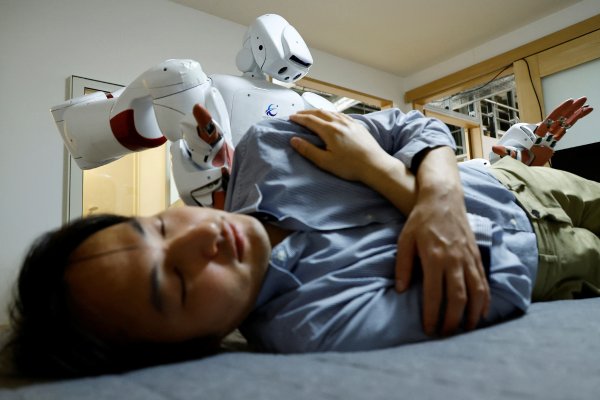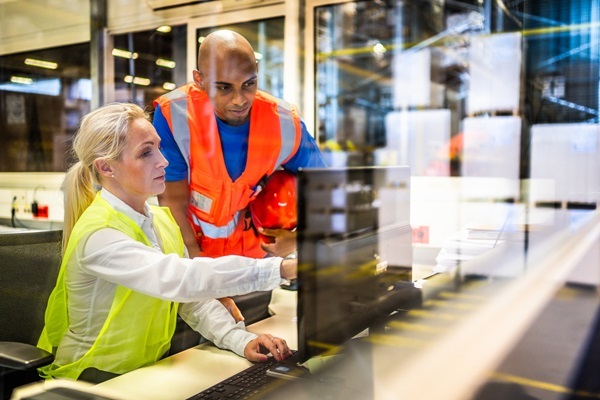How tech is the catalyst in the shift to flexible working-November 2021

The events of the past 18 months have accelerated an existing trend towards remote and flexible working, which had been slowly developing over the past two decades. As always, technology was the enabler, with faster broadband speeds and cloud computing major drivers.
Now, as the immediate danger of Covid recedes and businesses begin to emerge into something approaching normality, comprised in many cases of hybrid working arrangements, technology will again help to shape the future of the workplace. “The urgent need for businesses to reduce their physical presence alongside a drive to lower their carbon footprints is going to accelerate adoption of intelligent technology that can support the rise of smart buildings,” predicts Narinder Sahota, chief technology officer at Advanced. “These learn about occupancy patterns and then suggest how workplace conditions can be optimised for both workforce comfort and energy efficiency.”
“Working from home (WFH) has decoupled people from the workplace and systems that we previously assumed could only be accessed from there,” says Rohit Talwar, CEO of Fast Future and author of Aftershocks and Opportunities 2: Navigating the Next Horizon. “Now firms are seeing the value of moving applications to the cloud for widespread accessibility. Business applications and tool selection are increasingly being selected on the basis that working from home is or could be part of the core working model going forward in industry.”
Technology is also having an impact on how sales are conducted in the wake of the pandemic, says Liam Halpin, VP sales EMEA and LATAM, at LinkedIn Sales Solutions. “In many sectors this has involved a wholesale transformation of the sales process,” he says. “I’ve watched sales teams for export businesses, whose lives previously revolved around international travel and events, reinvent how they prospect, gather insight and build relationships. With the future of large-scale trade fairs still uncertain, they’ve turned to sales intelligence tools to fill the gap.” One example here would be a platform such as LinkedIn informing recruiters or HR teams when a target employee gets a new role, he adds.

The rise of remote working has also made cyber-security even more important, with 86 per cent of organisations expecting to permanently adopt remote working practices, according to research by Forrester. “It’s already well past time for infosec leaders to strategically re-evaluate the systems to accommodate these changes, with an eye toward making their security as dynamic as the workplace itself,” says David Cummins, vice president of EMEA Tenable, which commissioned the research. “Organisations need to rethink how they define risk, looking beyond software flaws and device compliance, to achieve a holistic view of their dynamic and disparate environments.” GDPR and data compliance is also a concern: 33 per cent of organisations that had suffered a cyber-attack in the past 12 months admitted it resulted in a data breach.
Big data, too, will play a more prominent role, particularly in sectors such as marketing, says Douggie Melville-Clarke, head of data science at Duco. “But in order for innovation to continue, education needs to follow,” he says. “If employees don’t have the analytical skills necessary to perform the statistical tests and experiments large data sets need, then industries will face setbacks.”
3D printing also came of age during the pandemic, being used to manufacture everything from swabs for Covid testing to face shields, points out Dave Prezzano, MD, UK & Ireland, at HP Inc. User data itself is now becoming increasingly useful, adds Halpin, with first-party data that is actively maintained by users rather than sourced from elsewhere particularly valuable.
Other trends that were developing before the pandemic remain ongoing. “As AI-based robots and humans continue to collaborate, productivity, quality and the security of the working environment will significantly enhance,” says Marina Ruggieri, IEEE fellow and professor of telecommunications at Tor Vergata University of Roma. “We can expect to see more encouragement towards enhancing the relationship between humans and robots in a cyber-physical domain.”
It’s essential businesses develop a culture of innovation that allows people to create and share ideas easily and assess any scenarios that may arise in the future, says Matt Spry, strategy consultant and founder of Emergent. “Design small-scale experiments and projects to test your hypothesis and possible responses,” he says. “This will create deep insight and learning, and help you prioritise the changes you’ll need to make to your business to thrive in the future.”
To discover ways to create new business opportunities for your organisation, visit business.linkedin.com/sales-solutions

Business Reporter Team
Most Viewed
Winston House, 3rd Floor, Units 306-309, 2-4 Dollis Park, London, N3 1HF
23-29 Hendon Lane, London, N3 1RT
020 8349 4363
© 2025, Lyonsdown Limited. Business Reporter® is a registered trademark of Lyonsdown Ltd. VAT registration number: 830519543





